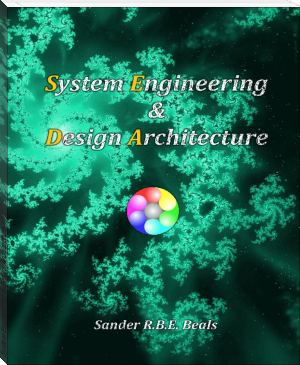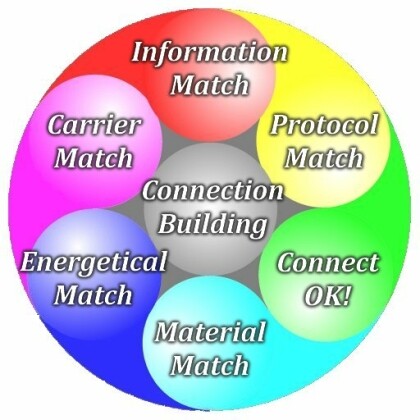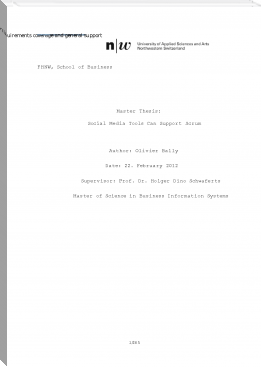System Engineering & Design Architecture, Sander R.B.E. Beals [first color ebook reader .TXT] 📗

- Author: Sander R.B.E. Beals
Book online «System Engineering & Design Architecture, Sander R.B.E. Beals [first color ebook reader .TXT] 📗». Author Sander R.B.E. Beals
Another set of soap bubbles are the customers of their various companies, who basically bring in the money that keeps the company together. They too are on the surface, even more than the employees, since they are not bound by a contract to show up and buy stuff. Of course that is what companies would love to change, hence the communications setup nowadays, where we get drawn into contracts by selling us free phones and tablets, and charging us for the transferring of information, a right that humans have always had. Yes, you are free to say almost anything, and free to gather almost any info, but getting it and sending it out are other concerns. But I must say, it does get easier if you don't try to get anyone to give anything for it: my books don't sell, but they download like a Bat out of Hell: 25000+ downloads from my own domain in the last half year, and I don't know how many sites have copies that can also be downloaded. In that aspect, I've become quite the soap bubble myself..... ;-)
In your Face!
OK, so Interfaces it is! We all know them, because we have family, friends, pets, toys, and what not. Interfaces are most known because of their end points, which each of the parties involved actually call 'their' interface to the other system or entity involved. As such, there must be something in between that will perform any translations needed. Notice also how there may actually be a whole string of interfaces and translations present between the interface from one system to the next: our chat session to a close friend in India may imply usage of both keyboard, microphone, and webcam, each of which are translated into the corresponding digital information streams needed to get them to the other side. Once there, they get decoded again, so they can be presented to the user over there. To us users, it is an elementary interface, which we work with intuitively, without ever having to have a real know how of just how the system in between operates. All we need to know is what controls to interact with on the end points in order to get the system to do what we want. That works OK in case we are connected to a system or entity we know, but can we actually be sure about where the interface leads us? Is not an interface merely the end of a virtual Einstein-Rosen bridge, which may in fact have its other end anywhere in the Cosmos? Hence the rise in 'channeled' ET's....
 This is the main reason interfaces have to be intuitive: if they are not, then using them will be a question to the user, rather than an exclamation mark: kinda like I once pushed a button which I figured at that time was not connected to anything: I pushed it out of my incessant urge to satisfy my 'Lust for Clarity' as a friend once formulated it.....
This is the main reason interfaces have to be intuitive: if they are not, then using them will be a question to the user, rather than an exclamation mark: kinda like I once pushed a button which I figured at that time was not connected to anything: I pushed it out of my incessant urge to satisfy my 'Lust for Clarity' as a friend once formulated it.....
Also, there is the problem of "Where is it leading me to?". In this case, my work this morning has just changed my intended audience for this document: no longer a company-related effort, but rather a journey of systems discovery, related by an 'Old Shatterhand' in order to help the youth get their grip on the world around them. As if they need any help ;-)
So, what do we know about any interface to another 'System'? Let's see:
It has an interface that is connected to something either inside us or outside: a stomach ache will tell us about an internal sense of wellbeing, or a 'malfunction' or 'disease'. An outside interface involves any of our outside senses, or sensors. We may believe we have five, or maybe even many more, but in fact, the five have multiple functionality: where two hands are needed to normally ride a bike, only one is needed to send a text message to a friend, or hold a loved one... And touch senses physical contact as well as temperature.
But this signal we receive may have a different meaning depending on the Status Quo we find ourselves in: we may conclude that a stomach ache will probably have been caused by the copious meal we ate yesterday, and dismiss it without a second thought, just like we do with most spam on our computers. On the other hand though, the info coming in could have us look at it twice, as if it is somehow relevant to our current process: in the same manner I just went image hunting for a new cover on this book, only to find out that my favorite Internet market sent me a selection of their collection, which they claimed was specific for me: it only showed me four articles, which happened to be all keyboards! Well thank you, but my current keyboard will do just fine. On the other hand though, could it be a hint to stop the hunt for the cover in favor of the current writing streak I find myself in?
So yes, we decide the meaning of the incoming messages, just like any system will have to. So far, software systems have relied on our programmers and designers to do the work of defining all the interfaces, but this is likely to change in the coming times as we grow to better understand the essence of interface development. Point in fact is we decide the meaning based on our current knowledge, which is never complete: any signal coming in could potentially radically alter our perception of any given system: like most people might have second thoughts about relationship sites (too much clutter), my eldest daughter found her mate on one, and she has been quite happy with him for two years now! So that would alter my perception of these sites and the chances of finding a mate through any virtual channel in a profound way.... (And cause me to react positively to incoming mails). Also, further experience with sudden unexpected E-mails from women may then change my mind again for me, but that is the nature of an evolving being: it adapts to any change in its environment, in the most meaningful manner it can find based on its acquired knowledge sofar. That is why dogs being mistreated will become fierce and dangerous, because that is what they know of the world around them!
Interfaces are not static: they evolve from release to release, as our engineers learn more about the needs of their systems to evolve. Currently this is a concept which is applied from without, but like games that are based on 'artificial intelligence' and/or 'genetic algorithms', the learning ability may also become an evolving feature of our systems. Even handwriting recognition is possible nowadays, and CAPTCHA may soon be cracked too (if it hasn't already), suggesting adaptation is a viable solution for any interface. For a quick heads-up on the programming concepts I just mentioned, see Appendix C.
Since interfaces are not static, they require a learning experience on the part of the user: just like Microsoft's totally reworked user interface for Windows 8 in order to recapture their share of the tablet market may cost them many desktop customers who will either stick with the 'old and trusted' interface of Windows 7, or migrate to other systems like Apple, Linux or Android, too steep a learning curve will kill the popularity of your system. It is like the coffee machine in 'the Green Hornet': if you need your sidekick to have it make a decent cup of coffee, then you should consider redesigning at least the interface and probably the entire system, because it is definitely not the solution indicated by Occam's Razor...
Speaking of Occam's Razor, this shows a definite concept that should be part of any system: razors only became truly 'safe' once the concept of them being able to cut a man's throat was eliminated from the system with the evolution of the so-called safety razor blades. OK, at first you could still take the blades out of the razor in order to cut anyones wrists (including your own), but nowadays the blades are embedded into the head, so that is no longer an option. Of course, for those aiming to do so, DIY blades have now become the viable alternative..... But you see my point, no doubt: safety should be built into the system, and not be another system that is applied from the outside in order to determine if the system is safe, especially if it is decoupled the moment the system under test is released for active duty! Perhaps, even symbiotic test setups or quadruple redundancy may be needed to make systems truly error-free.
Now most interfaces today are already following a certain protocol in order to connect safely, which may be so intuitive to the users, they hardly ever ponder the consequences of their connection efforts. But that is just what the next chapter is going to address.....
Connecting to the Unknown....Connections, we make thousands per hour, without even blinking twice: every word heard will trigger an association with concepts inside our minds, and every connection of those words with the others in a sentence will alter those associations into more meaningful ones, which heighten our perception of the information coming in. But let's back up a bit, and see how connections actually get connected, shall we?
 First of all, there must be a material match: have you ever seen the various DVI-type connectors for video? The are all alike in their overall form, to indicate their belonging to a certain family of connectors, so you don't go sticking mains power into your video input jack. On the other hand though, the various pins that exist within the overall surrounding form of the plugs makes sure you also cannot push it all the way in if the protocol required wouldn't match anyway. This separates analog from digital video, and the other way around. This is all guarded against abuse by material aspects of the interface.
First of all, there must be a material match: have you ever seen the various DVI-type connectors for video? The are all alike in their overall form, to indicate their belonging to a certain family of connectors, so you don't go sticking mains power into your video input jack. On the other hand though, the various pins that exist within the overall surrounding form of the plugs makes sure you also cannot push it all the way in if the protocol required wouldn't match anyway. This separates analog from digital video, and the other way around. This is all guarded against abuse by material aspects of the interface.
Once the material interface is matched, it is followed by the energetical match, which should already be guaranteed largely by the material match that came before: think about the USB interface, which is electrically stable, and defines the electrical functionality the few pins and the outer sleeve of the interface have. Still though, a system connected that way might put too large a load on our system, and burn





Comments (0)